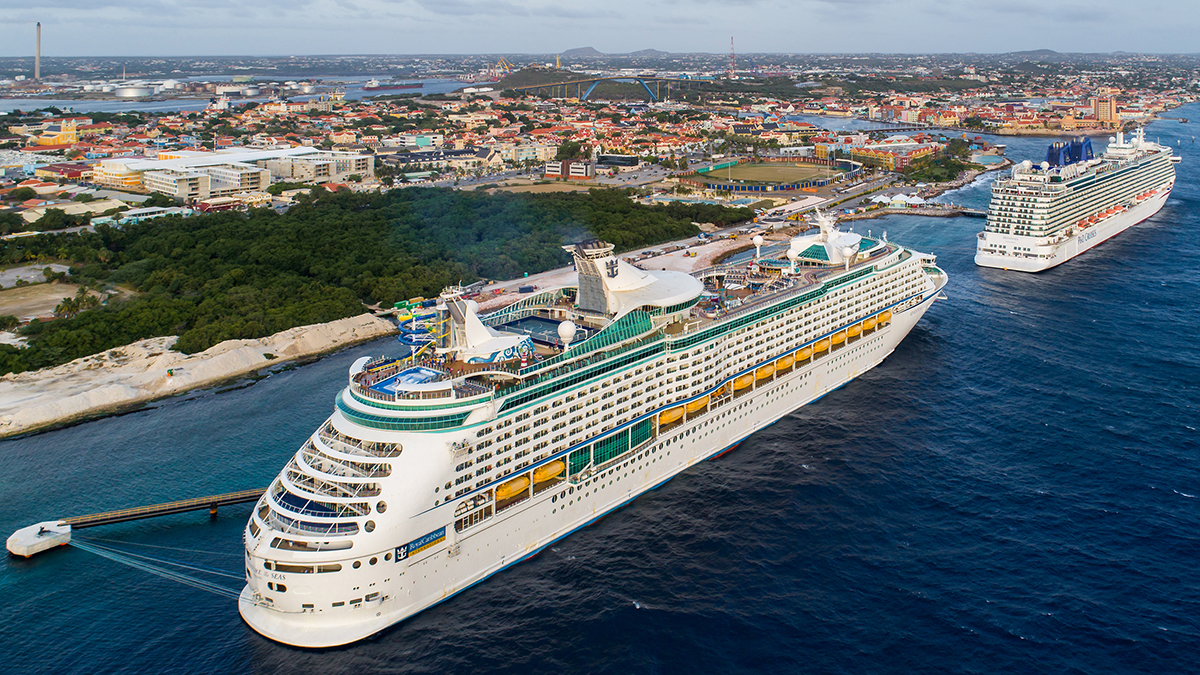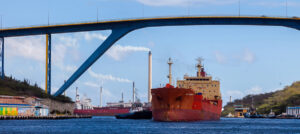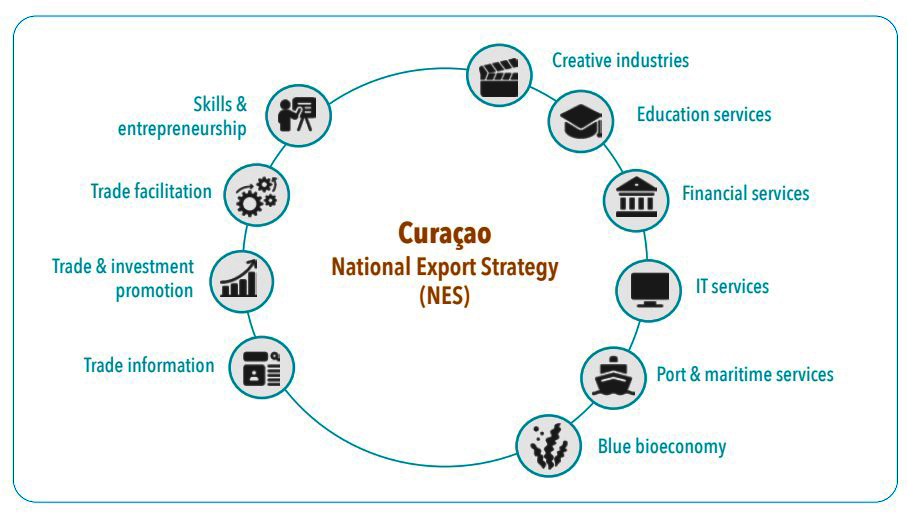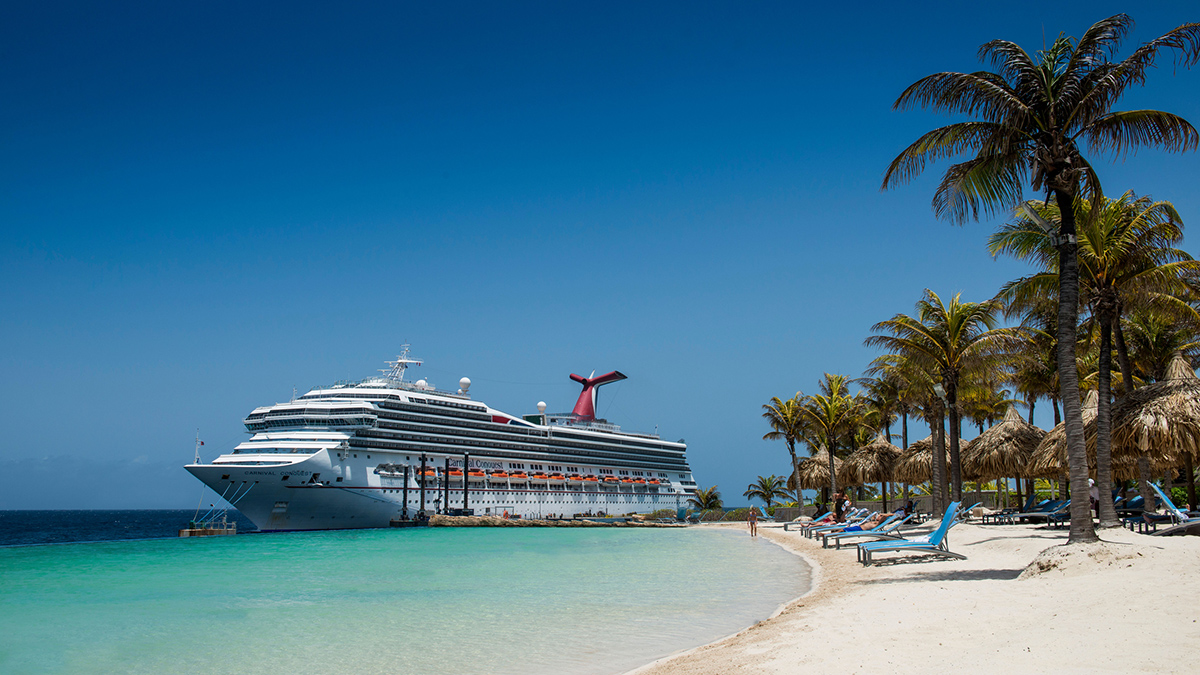
A case study
By Jan Sierhuis
In 2010 when the Netherlands Antilles were dissolved, Curaçao obtained its long desired autonomous country status within the Kingdom. And the country turned inwards in the political struggle to define its new identity. Meanwhile, outside developments started to erode the old socio-economic base.
When the USA imposed its oil trade embargo on neighboring Venezuela, this led to a full withdrawal of Venezuela’s state-owned oil and natural gas company, Petroleos de Venezuela S.A from Curaçao. This brought an abrupt halt in tanker trade to the local ISLA refinery and Curaçao Oil Terminal (COT). Curaçao immediately lost, until this day, 1,200 annual tanker calls.
When in 2020, the growing tourism business crumbled under the pandemic lockdowns, the port saw over 60% of its port traffic evaporate. Speedy cooperation between the port authority, local government and health authorities put Curaçao on the map as a reliable and accessible port for cruise vessels and yachts looking for safe storage, maintenance and repatriations. As markets opened up again in 2021, tourism has experienced a revival and the new government opened new negotiations with parties interested in taking over the oil facilities. It became clear that the Curaçao needed to look outward for growth and prosperity.
Curaçao is once again embarking on an export-oriented strategy.
National Export Strategy
During the Covid-19 pandemic, Curaçao’s Ministry of Economic Development (MED) quietly set the nation’s new export policy in cooperation with local and international stakeholders. Within the framework of the National Export Strategy (NES), the government designed action plans for six sectors, including tourism and maritime trade,; and, four trade support functions, including trade facilitation, information and investment promotion, to achieve the country’s vision of “Curaçao – where business succeeds”.
The strategy focuses on transforming the economic make-up of the country by creating new value chains in services exports.
Port and Maritime Services strategy
 The Port and Maritime Services Strategy identifies priorities to build a vibrant port and maritime services sector with high-growth potential by optimizing the value and quality of the most competitive services; providing a favorable business environment for companies; and, updating or developing new regulations on environment protection.
The Port and Maritime Services Strategy identifies priorities to build a vibrant port and maritime services sector with high-growth potential by optimizing the value and quality of the most competitive services; providing a favorable business environment for companies; and, updating or developing new regulations on environment protection.
To secure successful implementation, the government established an effective governance mechanism to implement the recommendations: the ‘Curaçao Export Council’ (CEC). The CEC acts as an advisor to the government and private sector. It is supported by teams of key public and private sector stakeholders.
The ‘Port and Maritime Service Team’, is chaired by Vanessa Toré of the Foreign Economic Cooperation Division of the Ministry. Vanessa, the navigator for the export strategy, explained the maritime targets and approach taken within the NES.
“The strategy aims at positioning Curaçao as the Caribbean specialist in value-added support services for the international port and maritime sector. This includes the so-called Blue Bio-economy sector (marine bioprospecting), which explores commercial applications of valuable chemical compounds, genes and natural products found on the vibrant reef system surrounding the island.”

Port initiatives
Both the public and the private sector launched new initiatives to tie in with the export strategy of the government. The Curaçao Ports Authority (CPA) (www.curports.com) views the ‘Latin Caribbean’ as its ‘natural hinterland’ for market growth. And the business intelligence of the Port of Rotterdam strengthens CPA’s competitive position in the Caribbean region.
Recently, CPA signed a Sister Port Agreement with APORDOM in the Dominican Republic to strengthen port cooperation in the Latin Caribbean region. Both ports will undertake joint actions in the areas of technical cooperation, knowledge sharing and business development. The initial business focus is on bringing back pre-2020 volumes in trade and cruise business.
“The advantage of formal bilateral agreement is that it serves as a mutually approved framework for national constituencies and stakeholders involved in the cooperation. This helps to give ‘stakeholder content’ to the cooperation,”, said CPA’s Chief Commercial Officer, Raul Manotas. “The Dominican Republic is an important maritime trading partner for Curaçao and also a ‘stepping stone’ for cruises into the Southern Caribbean, where Curaçao is located.”
Cruise developments
Ideas for targeting Latin-oriented cruise itineraries to include the more remote Southern Caribbean area were circulating and discussed in the regional cruise forums prior to the pandemic. But as the industry recovers, with cruise lines looking for diverse and unique experiences to offer cruisers, similar concepts can now be explored.
 The development of joint cruise itineraries is covered under the cooperation agreement with the Dominican Republic and CPA is looking at a joint approach towards this goal.
The development of joint cruise itineraries is covered under the cooperation agreement with the Dominican Republic and CPA is looking at a joint approach towards this goal.
“Such efforts could potentially include other Latin-oriented partner destinations like Aruba, Colombia and Panama’, explained CPA Business Development Manager Sem Ayoubi.
“Through such a concept, destinations can offer cruise lines a tailor-made product and jointly promote the destinations to a larger audience, while enabling a balanced and unique experience for cruise guests. Cooperation would target specific itineraries, offering flexibility, cost sharing and additional revenue opportunities by leveraging each destinations’ unique offering and promotional network”, Sem Ayoubi said.
New unity
A new association was established to unite the different maritime branches and markets operating on the island. The Curacao Maritime Association (CMAR), a non-profit organization established in 2020, plans to facilitate the development and growth of the maritime industry in Curaçao.
Following its inception, the CMAR enlisted national and international companies from sub-sectors of the maritime industry, including maritime service providers, shipping agents, terminal operators, shipping lines, vessel operators, charterers, tug and salvage companies, stevedoring companies, bunkering services, port authorities and others.
The primary purpose of CMAR is to assist its members in the study and search for solutions for common problems that directly or indirectly affect maritime activity. In performing this role, the CMAR (www.cmar-curacao.com) gets involved in functions such as representation in various forums in local and regional associations and organizations. CMAR also plans to play a role in the collective bargaining in the ports and to protect sector interests in the public arena.
“CMAR is working closely together with the MED and supports the NES. The association is in close communication with our members about the opportunities that Curaçao has to offer the maritime sector,” said CMAR President Johan Stegemeijer of the De Ruyter Training Center (DRTC).
CMAR Vice President, Lodewijk Franken, commented on joint efforts to develop new business for the Curaçao registry and efforts to support marine surveyors and other service providers to work together to avoid missed opportunities. “Cooperation and communication is a tool to develop more business for everyone,” he said.
The road ahead
For the Curaçao to be successful in its maritime trade, local cohesion and strong regional and international cooperation is required. After years of looking inward, the departure of Petroleos de Venezuela S.A. and the tourism crash during the pandemic shook the Curaçao economy and served as a wake-up call for both public and the private sector interests.
The intentions, strategies and private public framework are in pace. It is now up to the partners in the NES to capitalize on existing and emerging opportunities. And the port and maritime sector has apparently understood the message.
“A broad international and outward-looking perspective is how our port excelled in the past. And this is how the port will further pave its growth path for the future,” said the CPA’s Chief Commercial Officer. []
- First published August 1, 2022






